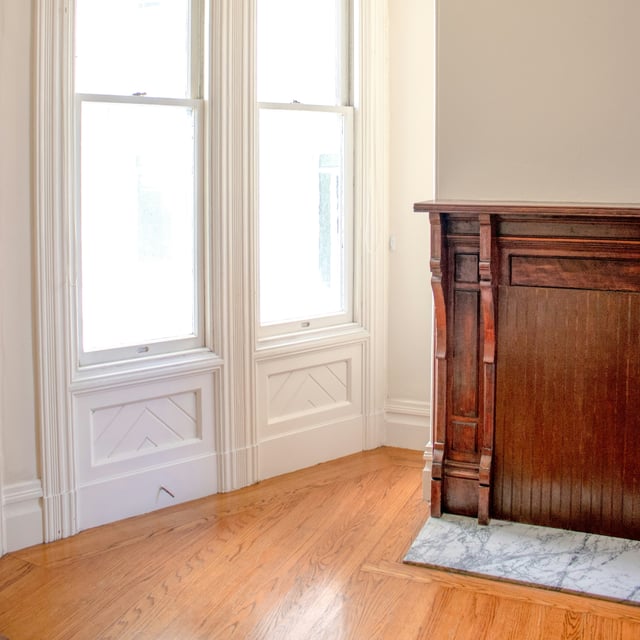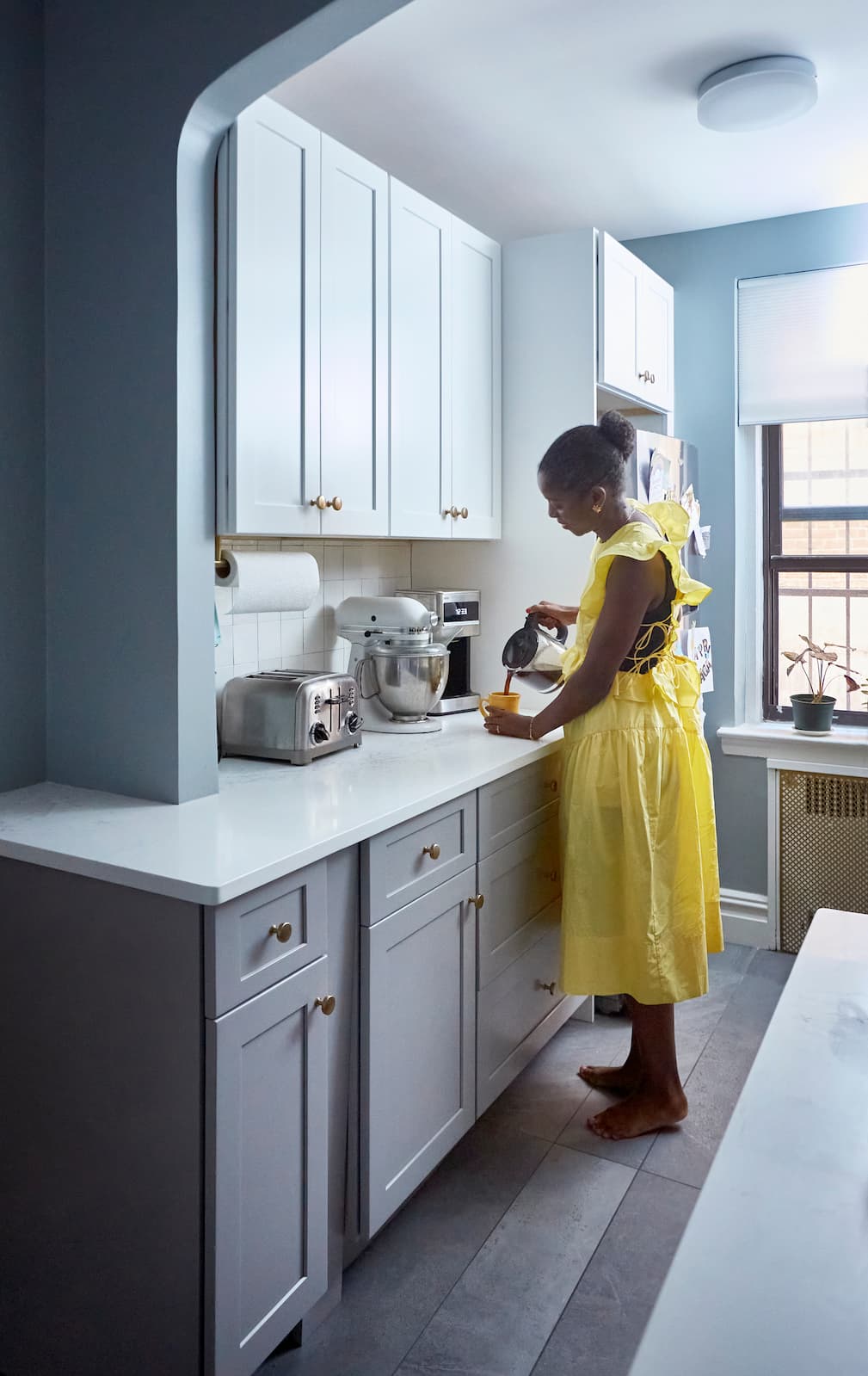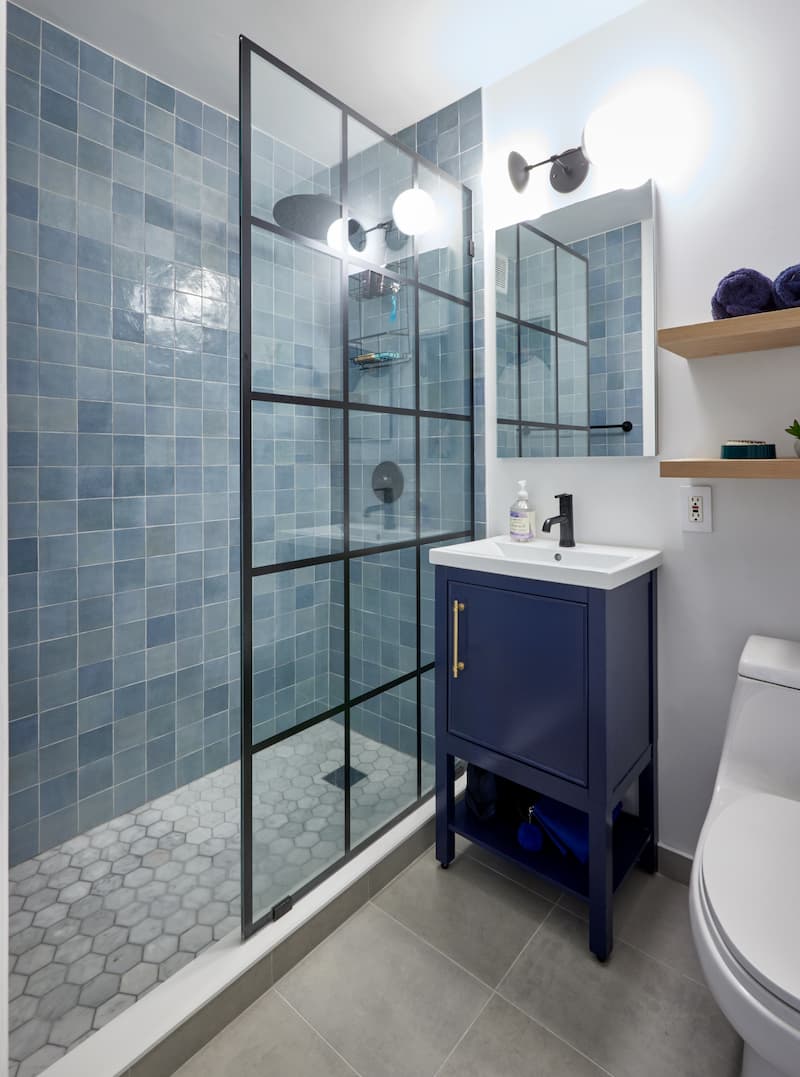Renovating Victorian Homes: Tips & Inspiration from Boston, San Fran & Beyond

In This Article
Victorian homes are more than historic structures—they're living artifacts of craftsmanship, detail, and era-specific design. From Boston’s brick-clad townhouses to San Francisco’s iconic “Painted Ladies,” these homes offer a distinctive blend of beauty and legacy.
But renovating a Victorian home comes with complexity. Homeowners must navigate the tension between preserving original character and bringing the space up to modern standards of comfort, safety, and efficiency. That means dealing with aging infrastructure, sourcing period-appropriate materials, and making tough calls about what to restore versus what to replace.
This guide outlines what to expect when updating a Victorian home—including key architectural considerations, modern upgrades that don’t compromise charm, and how to make informed decisions at every step.
What Is Block Renovation?
Block Renovation connects homeowners with thoroughly vetted general contractors who have direct experience with projects like theirs. Each contractor is screened through a multi-step process that includes past project reviews, in-depth interviews, and background checks. Planning to renovate a Victorian home in Boston or San Francisco? We’ll match you with contractors who’ve done it before—successfully, and nearby.
Renovate with confidence every step of the way
Step 1: Personalize Your Renovation Plan
Step 2: Receive Quotes from Trusted Contractors
Step 3: Let Us Handle the Project Details

Victorian Renovation Ideas from San Francisco and Boston Homes
This San Francisco Victorian blends historic character with Mid-Century influences, striking a balance between old and new. A sculptural central light fixture echoes the white-painted fireplace, tying together the space with a sense of cohesion and contrast. Contemporary elements—like airy MCM furniture and strategically placed greenery—add freshness without overwhelming the home’s original architectural charm.
This recently renovated San Francisco Victorian shows how strategic lighting and bold color choices can modernize a space without erasing its roots. Deep-hued paint and light wood furnishings give the kitchen a clean, contemporary feel, while the preserved original wood floors anchor it in its architectural past.
This 1905 Edwardian bathroom remodel in San Francisco shows how modern updates can coexist with period charm. A bold palette of blues, greens, and corals enlivens the space, while contemporary features—like a freestanding tub and detailed tilework—echo the intricacy of Victorian design. Every new element was selected with an eye toward honoring the home's original character.
Traditional Victorian interiors favored rich, moody palettes over crisp whites or pale hues. But as this Boston home shows, brightening the color scheme can give original period details new relevance—highlighting their craftsmanship while making the space feel current, not dated.
This Boston homeowner’s decision to paint the cabinets a deep green brings a fresh, modern touch to their Victorian space. However, the true standout is their thoughtfully selected contemporary kitchen backsplash, which adds a striking contrast and elevates the entire design.
Special Considerations When Renovating Victorian Homes
What Style of Victorian Home Do You Own?
Understanding the specific architectural style of your Victorian home is paramount to a successful renovation. This knowledge will guide your design choices, material selections, and preservation efforts, ensuring the renovation remains true to the home's heritage.
- Art Nouveau: Known for its flowing, organic lines and nature-inspired motifs, Art Nouveau often features asymmetrical forms and intricate detailing. Common elements include stained glass with floral or botanical patterns, curving wrought ironwork, and sculptural woodwork that mimics natural forms.
- Arts & Crafts: Rooted in simplicity and honest craftsmanship, the Arts & Crafts style highlights natural materials and functional design. Hallmarks include strong horizontal lines, low-pitched roofs, exposed rafters, and the use of locally sourced wood and stone. Handcrafted details—often subtle but meticulous—underscore the movement’s emphasis on quality over ornamentation.
- Gothic Revival: Inspired by medieval cathedrals, Gothic Revival architecture is defined by pointed arches, steeply pitched gables, and dramatic verticality. Common features include stained glass windows, ornate tracery, and decorative elements like finials and turrets—all often executed in dark, richly textured materials.
- Jacobethan: A revival style that fuses Elizabethan and Jacobean influences, Jacobethan architecture is marked by steeply pitched roofs, ornamental gables, and prominent chimneys. Facades often showcase half-timbering, patterned brickwork, or stone detailing—blending Tudor formality with Renaissance ornamentation.
- Terraced: Built in uniform rows, terraced homes share side walls with neighboring units and often feature narrow footprints with tall, vertical facades. Common details include bay windows, decorative brickwork, and stucco finishes—offering architectural rhythm and density in urban settings.
Common Issues with Victorian Homes
Victorian homes offer undeniable charm—but they often come with structural quirks and outdated systems that need attention. Identifying these challenges early on helps homeowners plan smarter renovations and create spaces that are both livable and efficient.
- Not Energy-Efficient: Built long before modern insulation standards, Victorian homes often suffer from drafty interiors, thermal bridging, and poor temperature control. Leaky windows, uninsulated walls, and outdated roofing make heating and cooling inefficient—making energy efficiency renovations a top priority for today’s homeowners.
- Dampness: Without modern damp-proofing and built-in an era of looser construction, Victorian homes are prone to moisture problems. Rising damp, wall penetration, and condensation in under-ventilated areas can lead to peeling plaster, musty odors, and even structural damage—posing both health risks and renovation challenges.
- Outdated Wiring: The original electrical systems in Victorian homes were designed for minimal power use and often include knob-and-tube wiring or early rubber-insulated cables—many of which have deteriorated with age. These outdated systems pose serious fire risks, struggle to support modern appliances, and typically require complete rewiring to meet current safety standards and electrical demands.
Victorian Elements: What to Preserve and What to Replace
Preserving original Victorian elements can add lasting value and visual depth to a home. But some features—especially those tied to outdated systems—may need to be replaced for safety, functionality, or longevity. Working with a contractor who respects your home’s architectural heritage and can source era-appropriate materials is essential to getting it right.
- Windows: Victorian windows are typically tall, narrow, and often feature sash or casement styles. They may have decorative glazing bars, stained glass, or intricate leading. Signs they may need replacing include rot, drafts, difficulty operating, broken panes, and visible condensation between double panes (if retrofitted).
- Plaster and Moulding: Victorian homes are renowned for elaborate plasterwork, including ornate ceiling roses, cornices, and detailed friezes. These elements add architectural grandeur. Signs they may need replacing include cracks, crumbling, water damage, dislodgement from the wall/ceiling, or significant aesthetic disfigurement that cannot be repaired.
- Floors: Victorian homes often feature wide plank floorboards, intricate parquet patterns, or mosaic tiles in hallways and bathrooms. Original floors can be beautiful and durable. Signs they may need replacing include significant warping, widespread rot, extensive damage that compromises structural integrity, or a desire to change the entire layout.
Design Choices That Pay Homage to the Victorian Home’s Heritage
Incorporating design elements that reference the Victorian era ensures your renovation feels authentic and respectful of the home's past. These choices can enhance the property's historical appeal while offering modern comforts.
- Clawfoot Bathtub: A classic cast-iron clawfoot tub instantly evokes Victorian elegance and luxury, serving as a striking focal point in any period-inspired bathroom. Consider a freestanding tub model strategically placed to highlight its sculptural qualities, allowing light to fall beautifully around it. Beyond aesthetics, these tubs often provide a much deeper and more luxurious soak than modern built-in alternatives, offering a truly indulgent bathing experience.
- Historically-inspired Cabinets: Choose cabinetry that echoes Victorian design—think raised panel doors, applied mouldings, and glass inserts that showcase treasured items. Rich wood tones like mahogany or walnut, or painted finishes in deep greens, blues, or burgundy, reinforce period character. Finish the look with hand-forged hardware in brass, oil-rubbed bronze, or antiqued pewter for an authentically grounded feel.
- A Statement-Making Front Door: A solid wood door—crafted from oak or mahogany—sets the tone for a Victorian home. Look for ornate glass panels, intricate mouldings, or bold period colors like deep red or emerald green to create impact. A transom window above adds both natural light and historical accuracy, while polished brass hardware—a lion’s head knocker, traditional letterbox—underscores the home’s architectural roots.
- Fireplaces: If original fireplaces remain, prioritize restoration—clean and repair cast-iron inserts, decorative tiles, and substantial wood or marble mantels. Where missing, consider installing period-appropriate cast-iron models with authentic motifs and tiled surrounds. These fireplaces serve as striking focal points, anchoring each room in its historical context. Before use, have the flue inspected and, if desired, retrofit with a modern wood-burning or gas insert for efficiency.
- Wall Coverings: Opt for wallpapers that echo classic Victorian motifs—large-scale damask, dense florals, or flocked patterns that add texture and depth. Deep jewel tones like emerald, ruby, and sapphire help create a layered, immersive atmosphere. For added authenticity, pair wallpaper with a painted dado rail or traditional wainscoting to reflect the era’s characteristic wall treatments.
- Lighting Fixtures: Choose lighting that channels the ornate feel of Victorian gaslight-era fixtures. Multi-arm chandeliers in polished brass or bronze suit formal spaces, while wall sconces with frosted, etched, or stained glass shades work well in bedrooms and living areas. These fixtures do more than illuminate—they reinforce the home’s period character and contribute to a rich, historically grounded ambiance.
Design Choices That Add a Modern Touch to Your Victorian Home
While respecting heritage, modern design choices can introduce functionality, light, and a contemporary aesthetic, creating a dynamic blend of old and new. These elements prevent the home from feeling like a museum and cater to modern living.
- Non-Traditional Colors: Introduce a sophisticated and contemporary palette of non-traditional colors for walls, trim, or cabinetry that provides a striking contrast to typical Victorian hues. Think about muted pastels, crisp whites, or bold, unexpected accent colors that create a fresh, updated feel without clashing with the existing intricate architectural details. For instance, a soft grey on walls can highlight ornate white crown moulding, or a vibrant indigo on a single accent wall can bring a dramatic modern edge.
- Avant-Garde Light Fixtures: Introduce contrast by pairing Victorian architecture with sculptural, minimalist lighting. Fixtures in polished chrome, matte black, or brushed nickel can act as modern art pieces within a historic shell. LED-equipped designs offer both efficiency and edge—whether it’s a bold geometric pendant anchoring a grand hallway or minimalist track lighting that highlights ornate plasterwork. The tension between old and new creates a dynamic, contemporary feel.
- Open-Concept Living: Thoughtfully reconfiguring a Victorian home’s interior can unlock a sense of space while honoring its structure. In kitchens and dining areas especially, removing non-load-bearing walls—with input from structural engineers—can create a more connected layout suited to modern living. The result: improved flow, better natural light, and a layout that balances openness with architectural integrity.
- Smart Home Technology: Modern functionality doesn’t have to clash with historic charm. Discreetly integrated smart systems—for lighting, climate control, security, and entertainment—can enhance comfort and efficiency without disrupting the Victorian aesthetic. Voice-activated lights, learning thermostats, and hidden speakers managed through intuitive apps bring seamless 21st-century convenience to a period home.
Renovate Your Victorian Home with a Skilled Contractor
Renovating a Victorian home is a journey that blends a reverence for the past with the demands of modern living. It requires a thoughtful approach, deep understanding of architectural styles, and the expertise to navigate the unique challenges inherent in older properties. By carefully considering preservation alongside contemporary enhancements, homeowners can transform these historical gems into vibrant, functional, and aesthetically pleasing spaces that will be cherished for generations.
Block Renovation stands as a trusted partner, connecting you with experienced general contractors who possess the precise skills and passion for restoring and reimagining homes of this magnificent era, whether you live in Brookline, Boston, San Francisco, Philadelphia, New York, or elsewhere.
Renovate with confidence every step of the way
Step 1: Personalize Your Renovation Plan
Step 2: Receive Quotes from Trusted Contractors
Step 3: Let Us Handle the Project Details


Written by Block Renovation

Renovate confidently with Block
Easily compare quotes from top quality contractors, and get peace of mind with warranty & price protections.
Thousands of homeowners have renovated with Block

4.5 Stars (100+)

4.7 Stars (100+)

4.5 Stars (75+)
Renovate confidently
- Top quality contractors
- Warranty & price protections
- Expert resources

